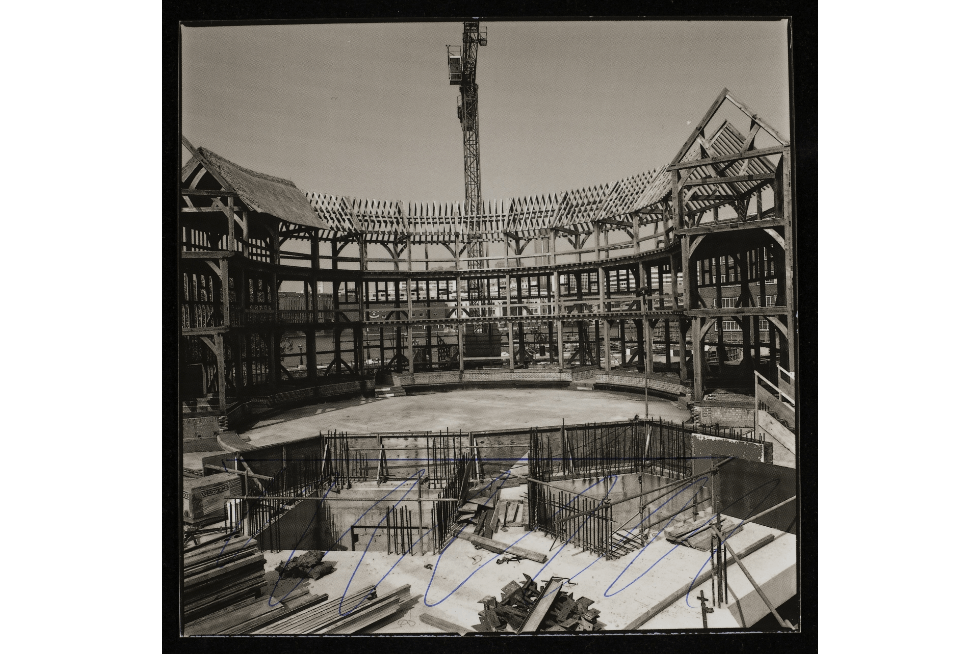My drops of tears I'll turn to sparks of fire: Burning down and building up the Globe Theatre
This blog includes temporary access to The 40 Principles, free until 27th July 2019.

On 29th June 1613, a theatrical cannon misfired during a performance of Henry VIII and set fire to the thatch of the Globe Theatre, engulfing the roof in flames. Within minutes, the wooden structure was also alight, and in under an hour the Globe was destroyed. Incredibly, only one casualty was recorded. A man’s breeches were said to have caught fire, and he doused himself in ale to put out the flames.
Built in 1599 on the south bank of the River Thames, the Globe Theatre had a difficult start. Owner, Richard Burbage had for some years operated another theatre in Shoreditch – quite simply known as The Theatre - however the land itself was on lease and after a legal dispute with the landlord, he and his players were forced to relocate. They dismantled the building and used the timbers to build the original Globe Theatre, with Shakespeare as both an actor and shareholder in the business.
After the fire destroyed the Globe, it was rebuilt with a tiled roof to prevent a similar disaster. However, theatres were gradually closed down in the subsequent years, with the Globe itself closed in 1644 to make way for residential buildings.
Centuries later, in the 1970s, actor and director Sam Wanamaker announced that he would reconstruct the Globe Theatre. He was amazed on visiting the original site that only a plaque remained to demonstrate this period of history and began planning an authentic reconstruction of the theatre on the South Bank. The idea of an ‘authentic’ Shakespearean theatre was debated throughout construction; plans needed to be modernised to account for today’s more stringent health and safety regulations. Wanamaker worked tirelessly for decades to secure sufficient funding, and the balance between authenticity and practicality was a difficult one. This is explored in a letter to Mark Rylance, featured in our Shakespeare’s Globe Archive: Theatres, Players and Performance resource. Andrew Gurr states here: ‘The tiring house area presents a very specific version of the general challenge…to reconcile the original structure with modern needs’.
The structure was made using green oak and the timbers were fixed together using wooden pegs, as in the original construction. The thatch was also included, but this time was made of fire-retardant material.

The 40 Principles listed in the research bulletin for the opening season of the Globe highlight the need to maintain the authenticity of an Elizabethan theatre, while being sensitive to the need to adapt to a modern world. From this fusion of old and new, the Globe Theatre emerges as a theatrical experiment that honours the past while looking to the future.

For more information on Shakespeare’s Globe Archive, including trial and price enquiries, please contact info@amdigital.co.uk.
Recent posts

The blog highlights American Committee on Africa, module II's rich documentation of anti-apartheid activism, focusing on the National Peace Accord, global solidarity, and student-led divestment campaigns. It explores the pivotal role of universities, protests, and public education in pressuring institutions to divest from apartheid, shaping global attitudes toward social justice and reform.

This blog examines how primary sources can be used to trace the impact of young voices on society, particularly during pivotal voting reforms in the UK and the US. Explore materials that reveal insights into youth activism, intergenerational gaps, and societal perceptions, highlighting their interdisciplinary value for studying youth culture, activism, and girlhood across history.
